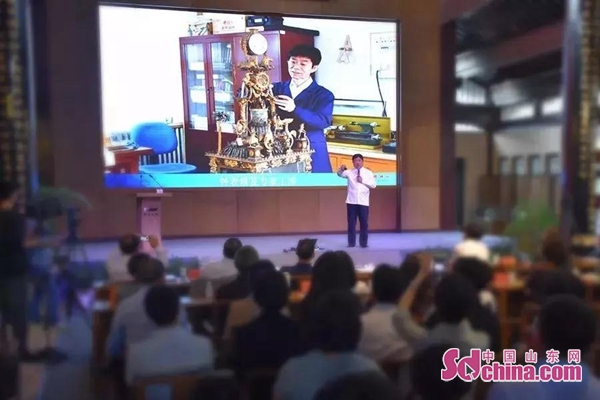您现在的位置是:半岛新闻网 > 资讯
Infinium's electrofuels: An instant zero
半岛新闻网2024-09-23 09:28:31【资讯】0人已围观
简介It's going to take decades to get aviation, shipping and long-haul transport down to zero emissions.
It's going to take decades to get aviation, shipping and long-haul transport down to zero emissions. The technology is embryonic right now, and some of these big vehicles are still in service 30 years after they're first delivered, so even once the tech is ready, the transition is going to be painfully slow.
But there's an interim solution, set to hit the market soon, that will allow these big polluters, as well as fleets of smaller vehicles, to totally decarbonize their transport operations – instantly, without so much as laying a spanner on their existing engines.
It works like this: you find an industrial operation that can't avoid releasing a heap of carbon dioxide into the atmosphere. You capture that carbon, and combine it with hydrogen generated from clean, renewable energy sources to create a synthetic hydrocarbon diesel or jet fuel.
You run that otherwise perfectly normal fuel through your airplane engines. And yes, they belch CO2 into the atmosphere as a result – but to extend on a thoroughly unnecessary metaphor, you get one belch for two meals. When you create your fuel from captured CO2, you're adding zero net carbon to the atmosphere.
Sacramento company Infinium calls these liquids electrofuels, and it's gearing up to get them onto the market at scale, and at a price point that could be competitive from the get-go in certain subsidized markets.
It's not a perfect solution, but it'll be an important interim step for industries that are still waiting for viable alternatives. It's also a much handier way to store renewable energy than hydrogen itself, which is a pain to store and transport – and the same technology can also be used to create carbon-negativeplastics, and other chemicals that you'd otherwise need to use petroleum for.
We caught up with Infinium CEO Robert Schuetzle for a chat about how electrofuels are made, who's going to be using them, what they'll cost, and how this space will develop over the coming years. What follows is an edited transcript.
Loz: OK, so what exactly do you guys do?
Robert Schuetzle: Infinium focuses on the production of what we call electrofuels – producing liquid fuels that are drop-in or direct replacements for today's fuels. Like diesel fuel for long-haul transport, diesel fuel for marine, and jet fuel for aviation, but instead of using petroleum or oil, we use renewable power and CO2 that would otherwise be emitted to the atmosphere.
The renewable power is used with traditional electrolysis to generate green hydrogen, and then our technology takes the low-carbon hydrogen stream, and the CO2 stream and produces what we call electrofuels from those feedstocks.
Even though Infinium is a new company, it's based on 10 years of work under our predecessor Greyrock Energy. Last year we raised a funding round with Amazon, Mitsubishi Heavy, AP Ventures out of London, a German industrial conglomerate called Neuman-Esser and the Grantham Foundation Neglected Climate Opportunities Fund, and kicked off Infinium on its own trajectory. We felt it was the right time to start getting commercial electrofuel volumes into the market.
Where do you get those captured CO2 emissions from?
We can use any CO2 source, based on the economics and availability. Right now most of our projects are dealing with relatively pure CO2 sources from industrial plants: ethanol facilities, ammonia facilities, natural gas processing chemical facilities, operations that are currently emitting CO2 into the atmosphere. That becomes a feedstock for us.
As we advance, we're working on a few projects that do post-combustion capture from power plants or refineries. And then our third horizon that we're very excited about is direct air capture: capturing CO2 from the atmosphere. We're tracking that space carefully. We don't have technology in that space, but we'll be a buyer of direct air capture systems to feed our plants when they're commercially and economically viable. So today, highly concentrated sources, there's plenty of that. But eventually, broader CO2 as the cost curves come down.
I guess the long term goal is to get to zero emissions with the vehicles themselves, but this kind of thing is a valuable, immediate, interim step. It's still putting those emissions back into the atmosphere, effectively, but it's zero netemissions because the fuel's made from CO2 that would otherwise have been emitted somewhere else.
Yeah, that's exactly right. We're capturing that CO2, but yes it's emitted on the other end. It's a net zero carbon cycle. So Amazon as a customer can help to achieve their net zero carbon goals, especially with aviation and long haul transport – things that are hard to electrify or change over – immediately, by using these electrofuels versus having to change over vehicle fleets that could take years or decades.
OK. So with any measure like this, the key factor is cost; how much of a green premium do users pay?
Correct. So these fuels are more expensive to produce. Today, a lot of that is because electrolyzers are pretty expensive. Renewable power costs have come down considerably in the last five to 10 years – that's a big reason we spun out Infinium last year – but electrolysis is still expensive.
So our fuels today do require subsidies in markets that support a premium, like California's low carbon fuel standards – that's a US$4 billion credit program, and we achieve a close to zero carbon intensity. So we garner a significant premium here in California. State of Oregon has a program, Washington is almost done with theirs, BC has a very attractive program. The UK's program is just gearing up. Scandinavia has significant requirements coming, as well as the broader EU.
We do require those subsidies for these plants to be economical so we look at targeting our fuels for subsidized marketplaces, even if they're not necessarily produced there.
Gotcha. So, pre-subsidy, what kind of cost increase are we looking at? Because obviously it's a lot more complicated than just pulling dinosaur bones out of the ground and burning 'em dirty?
Absolutely. It depends on the market and the project – a lot of variables, but these are about twice as expensive as traditional fuels today. So we've got a way to go, to get to parity. But over the next decade, all the trends point in the right direction for us. Electrolysis prices will fall – that's a huge part of our economics. Efficiencies will come up, and renewable energy costs will continue to come down. We feel really good about being at or below parity with oil-derived fuels sometime in the next 5 to 10 years.
OK so the hydrogen itself is the bulk of your cost – what about the carbon, do you get that for free?
We try! We always come in and say look, we'll take care of your emission source. Frankly, most of the conversations end up where we end up paying a little bit of money for it, you know, $10 to $25 a ton. You would think if they've been emitting it for 15 years, they'd be happy to have Infinium come along and take care of that, but it's kind of human nature: when somebody wants your product, even if it's a waste stream, they derive value there.
But, you know, we're happy to pay a little bit for it to get us a long term, committed offtake contract for the CO2 and turn that into a product for these companies, because it's a very minor part of our cost.
So what are you guys paying for green hydrogen at the moment, roughly?
On most of our projects, we do the electrolysis – so you're really paying for the power that goes into that. So wherever we go on the planet, we're looking for that nexus of low-cost renewable power – wind and solar primarily – and then a CO2 emission source that we can contract for.
Power prices, we want to be in the $20 to $40 per megawatt hour range to make it economical. That's pretty low in some places, but we're finding a number of areas with high renewable power potential that can do much better than that, because they're isolated, and they can't get their power to market because of massive transmission costs to get their energy into a population center.
What's the process you guys use to combine the hydrogen and the carbon?
We take a two step process – this is all Infinium proprietary technology, based on the gas-to-liquid work we've been doing at Greyrock for the last 10 years. The first step is the CO2 and the hydrogen get converted into syngas. Syngas is hydrogen and carbon monoxide, and it's a common intermediary for methanol production and other chemicals, it's been used for decades. Once we get to syngas, we then use our GreyCat catalysts to directly produce liquid fuels from the syngas. That's how we get to the liquids.
We've commercialized Greyrock's Gas to Liquids platform over this 10-year period, we have operating facilities at large commercial scale, and we're leveraging that for the second stage; that's one of the unique elements of this project.
很赞哦!(711)
相关文章
- Norris stuns Verstappen at Dutch GP
- 端午理财产品数量锐减 消费者更趋成熟理性
- 青岛工行荣获青岛市银行从业人员综合业务竞赛团体个人双冠军
- 首次饰演武侠片中的历史人物 青岛演员文俊珽用“尊重历史”刻画角色
- Freedom from Dissent
- 守护“广州绿心”!广州海珠国家湿地公园党组书记梁锋为绿美广东代言
- 青岛东方影都闪耀第23届香港国际影视展
- 揭晓!“寻找最美渔港”广东摄影、短视频大赛获奖名单公布
- Table tennis star Shin Yu
- 涓栫晫杞介噸鍚ㄤ綅鏈€澶х殑澶氱敤閫旈噸鍚婅埞鈥滄嘲鍏粹€濊疆棣栬埅灞变笢娓彛鐑熷彴娓痏涓浗灞变笢缃慱闈掑矝







